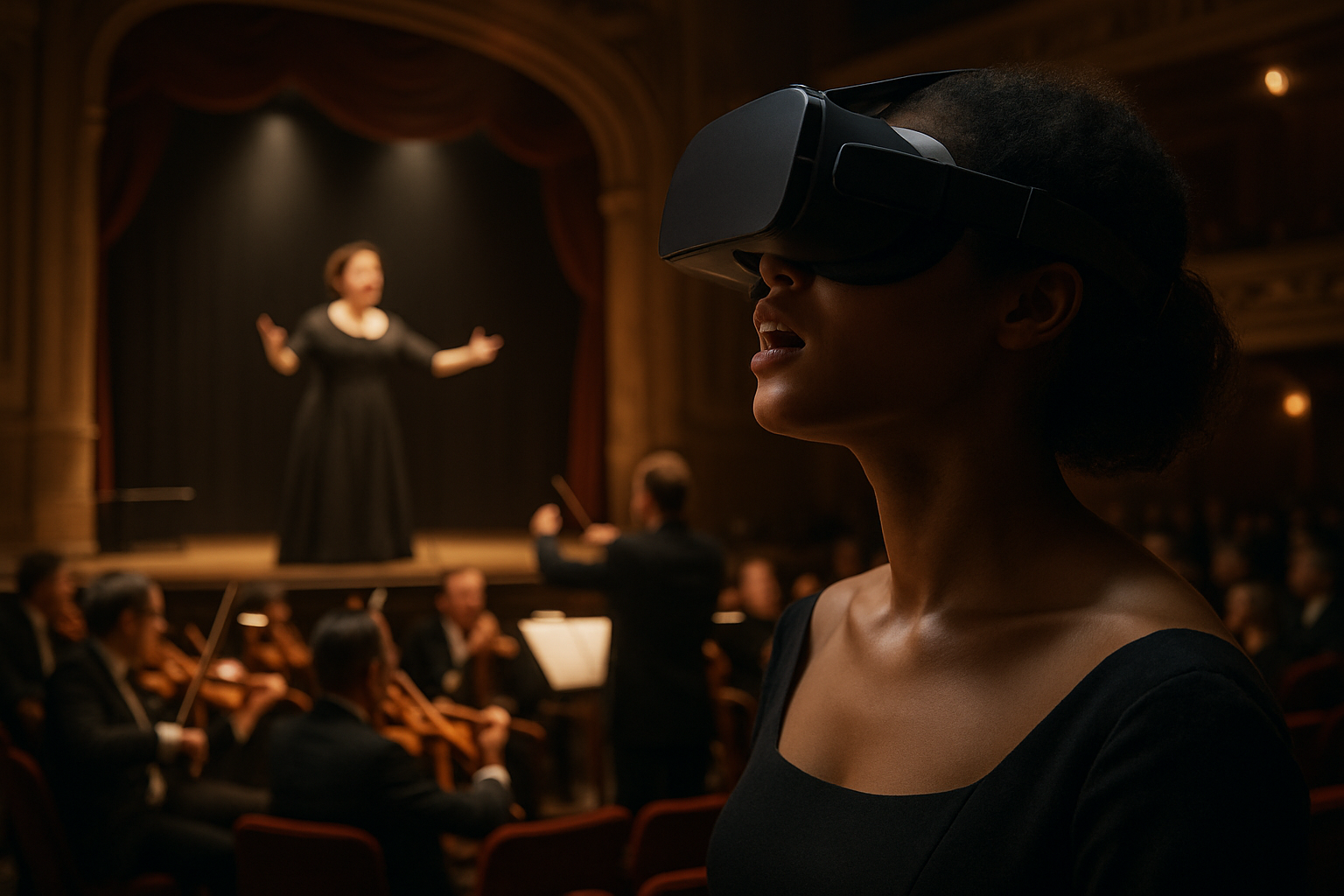Holographic Opera: The Future of Immersive Performance
In the ever-evolving landscape of performing arts, a groundbreaking fusion of technology and classical artistry is reshaping the operatic experience. Holographic opera, a cutting-edge approach to staging, is revolutionizing how audiences engage with this centuries-old art form. By seamlessly blending traditional operatic elements with state-of-the-art holographic projections, these productions are pushing the boundaries of visual storytelling and immersive entertainment. This innovative technique not only breathes new life into beloved classics but also opens up unprecedented possibilities for original works, challenging our perceptions of what opera can be in the 21st century.

The breakthrough came with the development of high-resolution, 360-degree projection systems capable of creating fully immersive environments. These systems allowed for the creation of entire virtual sets, complete with interactive elements that could respond in real-time to performers’ movements. This technological leap forward marked the true birth of holographic opera as we know it today.
Reimagining Classical Works
One of the most exciting applications of holographic technology in opera has been the reimagining of classical works. Productions of beloved operas like Mozart’s The Magic Flute and Wagner’s Ring Cycle have been transformed through the use of holographic scenery and characters. These new stagings allow for a level of visual spectacle and fantastical realism that was previously impossible to achieve.
In a recent holographic production of Puccini’s Madama Butterfly, audiences were transported to a hyper-realistic rendition of early 20th-century Japan. The holographic set shifted seamlessly between lush gardens, bustling ports, and intimate interiors, all with a level of detail and authenticity that traditional sets could never match. This visual richness not only enhanced the storytelling but also provided a fresh perspective on a well-known work, allowing audiences to experience it as if for the first time.
Creating New Operatic Worlds
While reimagining classics has been a significant focus, holographic technology has also opened up new avenues for original operatic works. Composers and librettists are now collaborating with visual artists and technologists to create operas specifically designed for holographic staging. These productions push the boundaries of what’s possible in live performance, blending the physical and virtual in ways that challenge our understanding of reality and perception.
One standout example is the recent premiere of Quantum Entanglement, an opera that explores themes of parallel universes and quantum physics. The production utilized holographic technology to create mind-bending visual effects, such as characters splitting into multiple versions of themselves or entire scenes transforming instantly based on the choices made by the protagonists. This level of visual flexibility allowed for a narrative complexity that would be impossible to achieve through traditional staging methods.
The Technical Challenges and Innovations
The creation of a holographic opera production presents unique technical challenges that have spurred significant innovations in the field. One of the primary hurdles has been achieving perfect synchronization between the live performers and the holographic elements. This has led to the development of advanced motion-tracking systems that allow the projected environments to respond in real-time to the movements and positions of the singers and musicians.
Another major focus has been on improving the visual quality of the holograms themselves. Early productions were often hampered by issues of transparency and a lack of depth, which could break the illusion for audiences. Recent advancements in projection technology and 3D modeling have dramatically improved the realism of holographic elements, creating truly believable virtual environments and characters that can seamlessly interact with live performers.
The Impact on Performers and Audiences
The advent of holographic opera has had a profound impact on both performers and audiences. For singers and musicians, it presents new challenges and opportunities. Performers must learn to interact convincingly with virtual elements, often requiring them to develop new skills in spatial awareness and timing. However, it also offers them unprecedented creative freedom, allowing for performances that would be physically impossible in a traditional setting.
For audiences, holographic opera provides a level of immersion and spectacle that can be truly transformative. The ability to be transported to fantastical worlds or to see impossible feats realized on stage has breathed new life into the art form, attracting younger audiences and reinvigorating interest among long-time opera goers. Many viewers report feeling a deeper emotional connection to the stories and characters, as the enhanced visual elements help to break down the barriers between the audience and the performance.
The Future of Holographic Opera
As technology continues to advance, the possibilities for holographic opera seem limitless. Current developments in augmented reality (AR) and virtual reality (VR) technologies promise to take the immersive experience even further. Some companies are already experimenting with AR operas, where audience members wear special glasses that allow them to see holographic elements integrated into their real-world environment.
Looking ahead, we may see fully virtual opera experiences, where audiences from around the world can come together in a shared digital space to experience performances. This could democratize access to world-class productions, allowing people who might never have the opportunity to visit a major opera house to experience the art form at its highest level.






